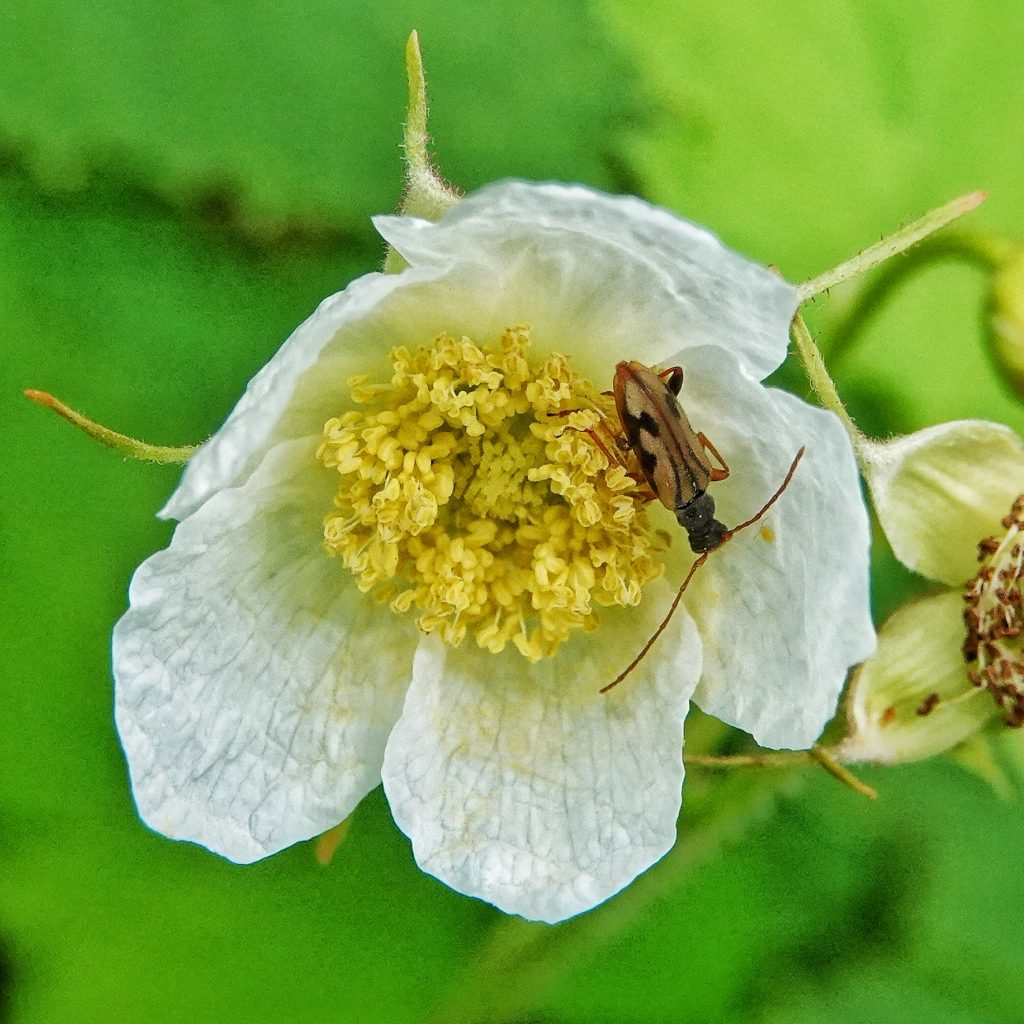
This is the last thing I’ll be posting for the next ten days or so. I’m heading off to s Oregon/n California to see what kind of things I can find and share here. Lichens, conifers, and millipedes are the objectives, but winter came in a bit earlier than I expected so I won’t be going everyplace that I’d hoped to explore. But I figure the beautiful country will be reward enough, and, since many of those areas have significantly different ecosystems than those around Vancouver, Washington, I’m bound to find some things I’ve never profiled (or even seen!), before.
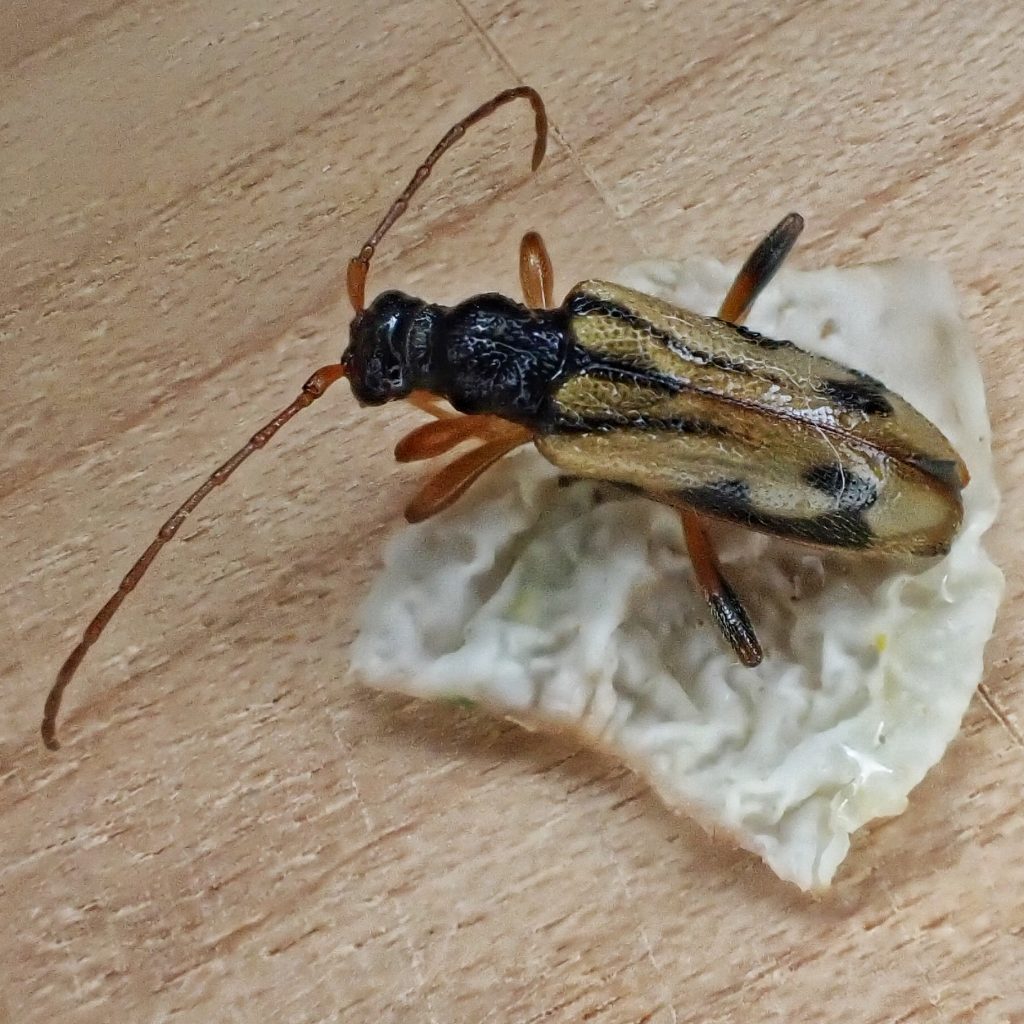
I found these two longhorn beetles back on June 1, 2022, when Pam and I visited the spot in the Columbia River Gorge where we had gotten married three years ago on that day. They were an easy identification, but I resisted posting a profile of them because of a dearth of information on the life history of this species. But having just finished packing for the trip, and wanting to get another profile out before my trip, I went back to these beautiful longhorn beetles, because I knew this was something I could get finished before I depart in the morning.
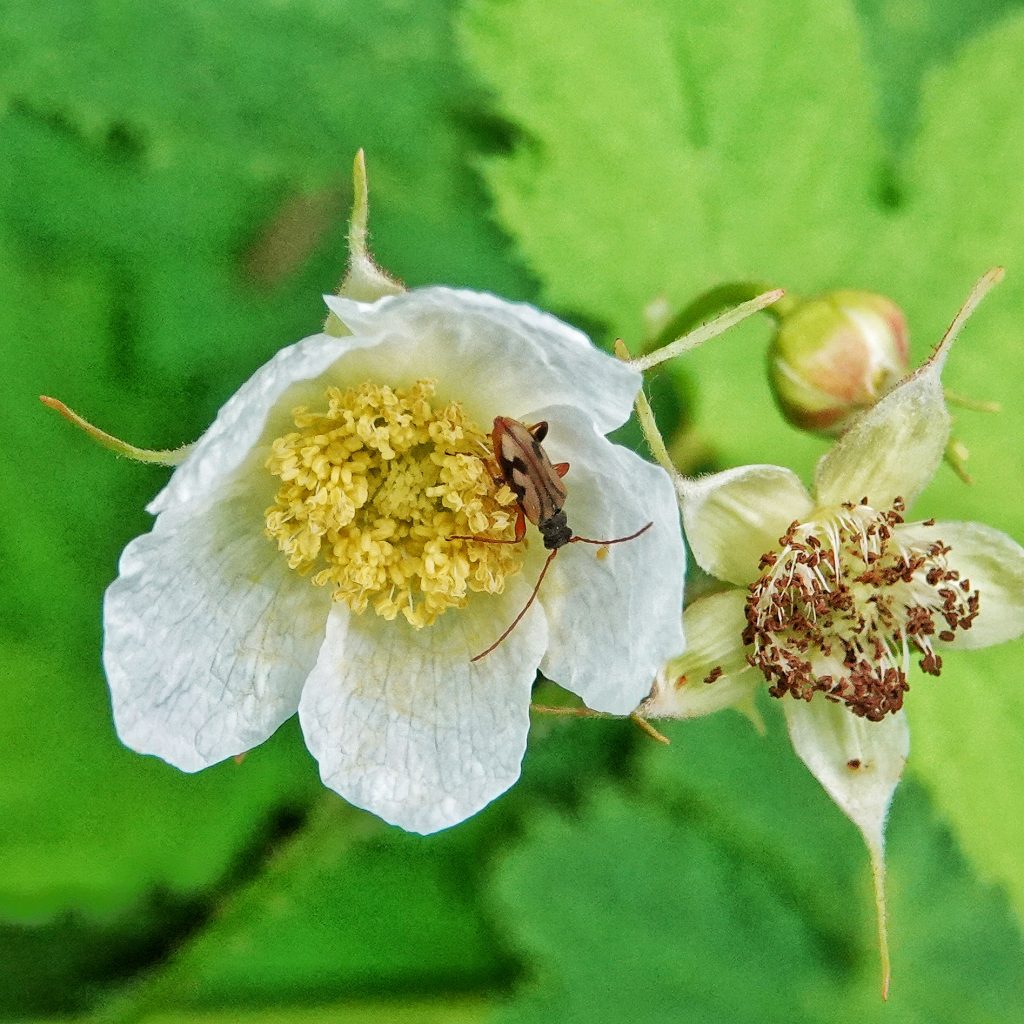
Description-Small (6-9mm long), slender beetle with dark reddish brown to black head and pronotum, light reddish brown legs, and yellow brown to tan elytra with a dark, angled slash near the front of the elytra, a dark spot near the margin in the middle of the elytra, and a dark blotch near the end of the elytra.
Similar species– The combination of size and elytral pattern is unique in our region; Ortholeptura valida are much larger and have spots near the front of the elytra.
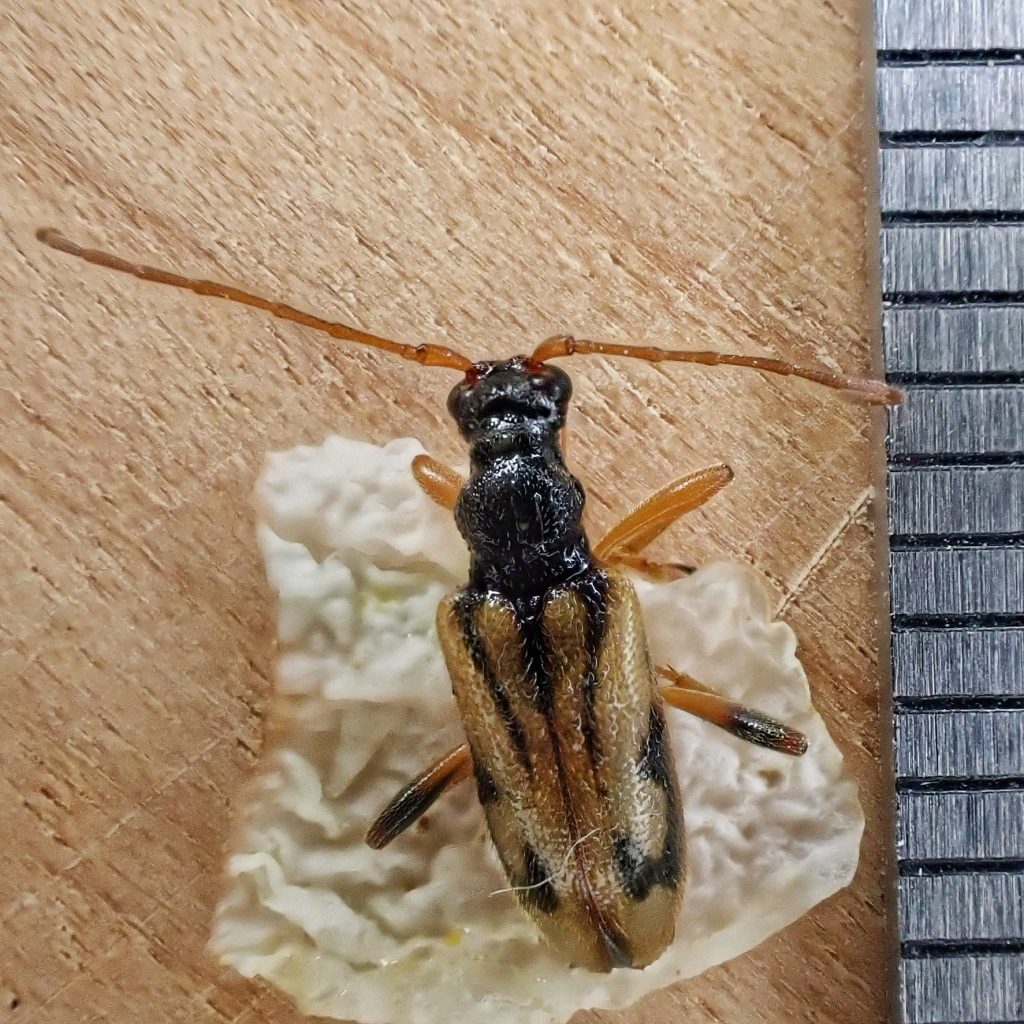
Habitat-Moist to mesic deciduous woodlands and mixed forests.
Range-Western North America; in our region they are found west of the crest of the Cascades, as well as in n Idaho and nw Montana.
Eats-Larval hosts are oaks, Oregon myrtle, a decaying branch of a maple (Vlasak; 2014) and probably other deciduous trees as well; adults visit flowers
Eaten by-Probably insectivores of all classes.
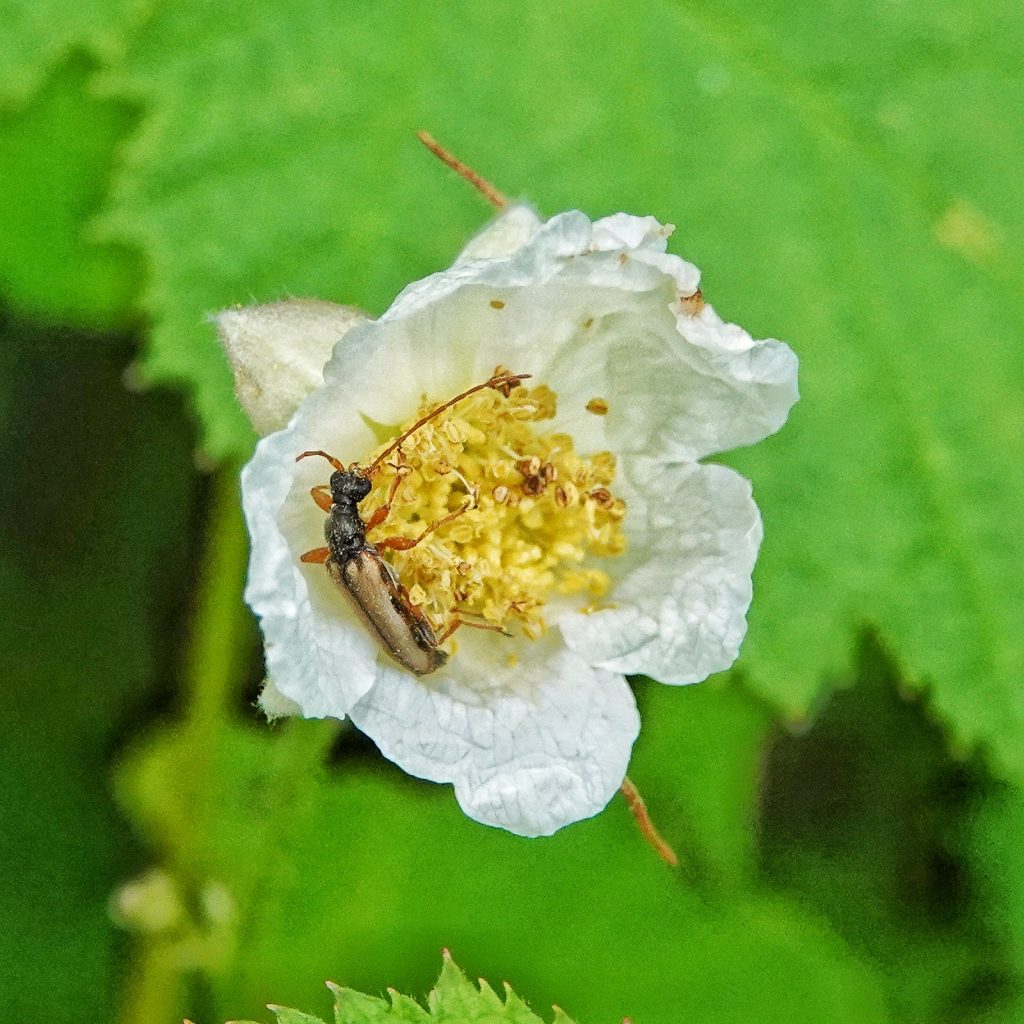
Adults active-Diurnal; May through July
Life cycle– I can find nothing specific for this species, but the eggs are likely laid on bark, and the larvae bore into the trees; larvae probably overwinter in the tree and pupate in the spring.
Etymology of names–Pidonia may be from the Greek word for a fountain/spring, but I cannot corroborate that. The specific epithet scripta is from the Latin word ‘writing’, and likely refers to the elytral pattern, but I can’t confirm that either.
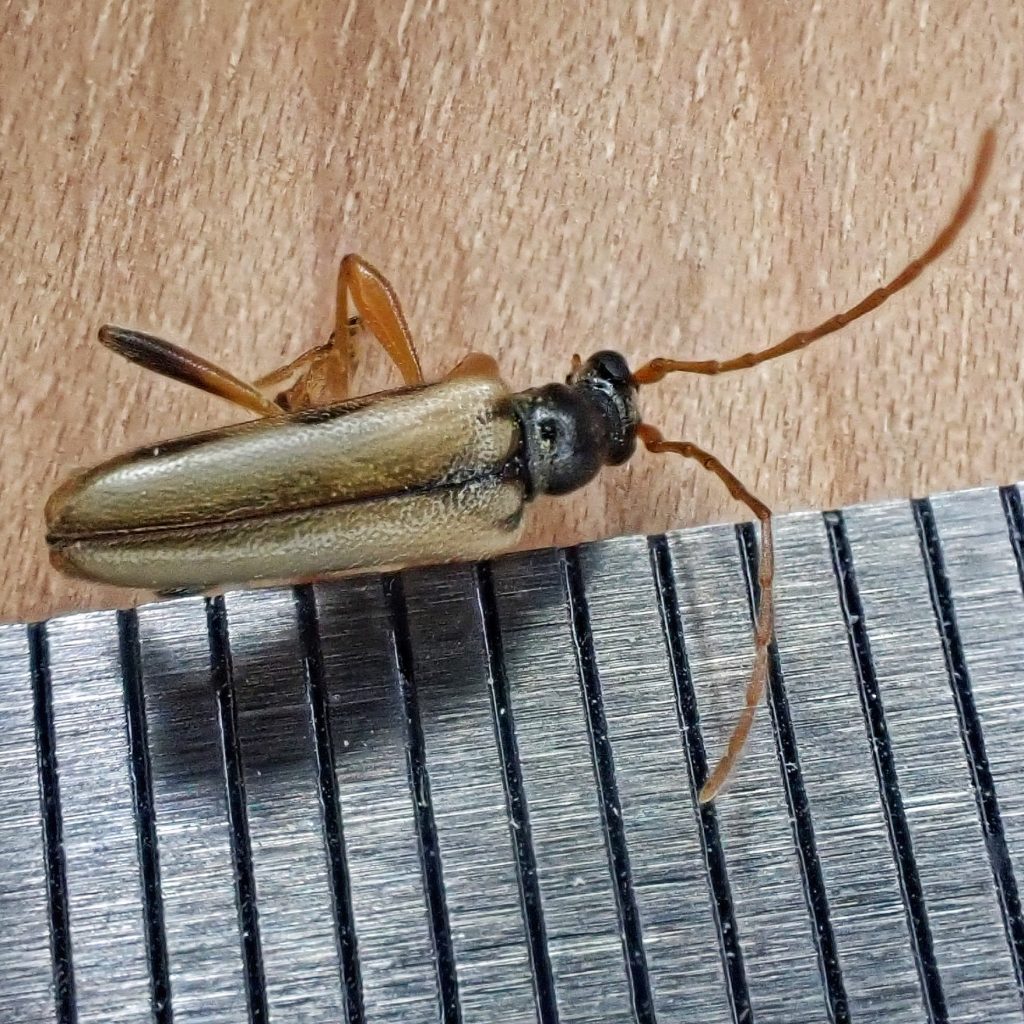
https://bugguide.net/node/view/162024
https://www.jungledragon.com/specie/31410/pidonia_scripta.html
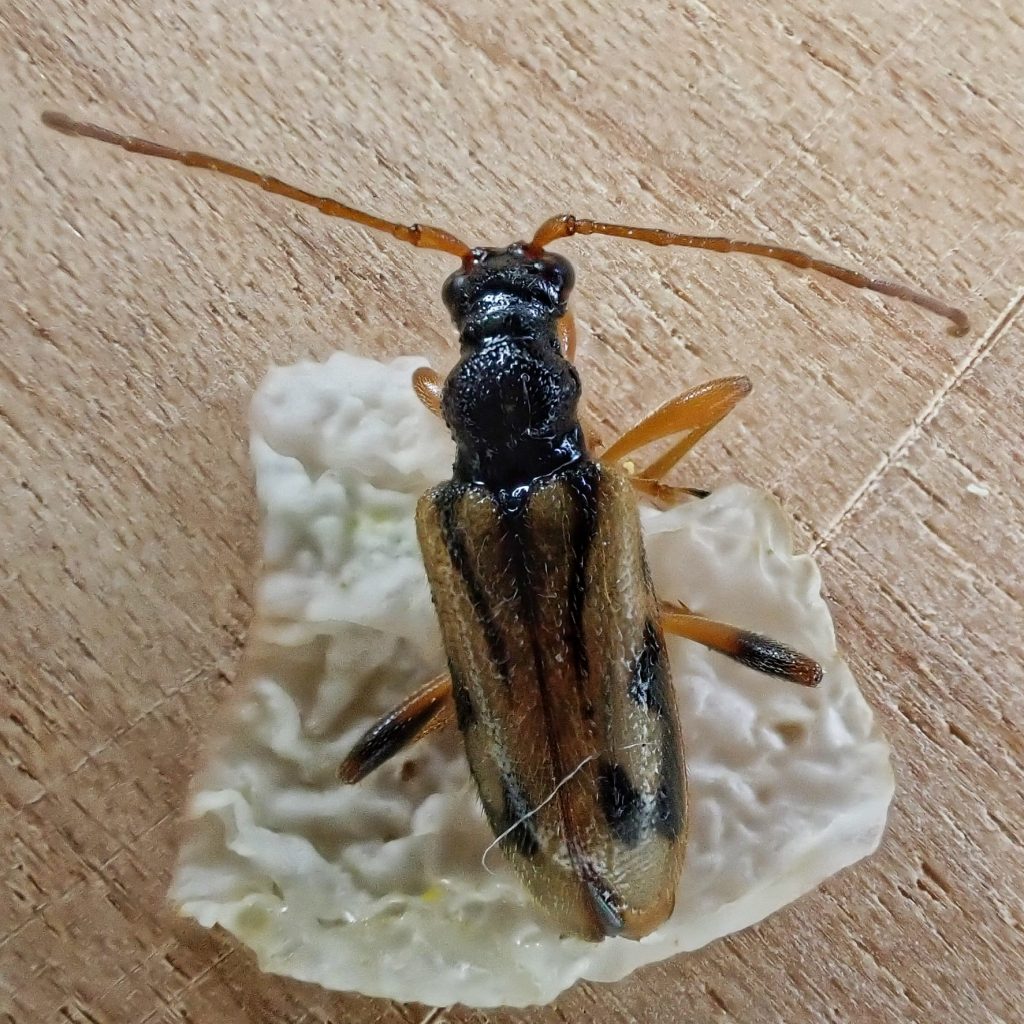
Love this
Bugs are my life
Well at least 10 percent
Yes, they can be very compelling, and I’m a bit obsessive myself. Glad to hear you liked it!
Enjoy your trip south, Dan, and see you when you return!
Thanks, Trevor!
Lol.. I’m preparing a bug posting that I’ve starting doing weekly on NextDoor and I was doing a little research into this lovely beetle. You’ve got the most comprehensive that I’ve found and lo and behold when I scroll down, I find a link to my photo (that I’m using) from Jungle Dragon :). Small world. I think you are better at IDs than I am, so it reassures me that I’ve got this one right.
Cheers from another bug fan
Thanks, E Palmer! Really glad to hear you found it useful. What is NextDoor, and can you share a link with us?
NextDoor is a neighborhood based social media platform. I’m not sure that it’s viewable without an account… but here’s my latest posting
https://nextdoor.com/p/gdRky5hwcBZd?utm_source=share&extras=NDAwNTg5MDA%3D
I’ve been doing a weekly profile of an insect that people might find in their own yards or in the parks and green spaces around them, here in the city. I started because people often post panicked – what is this!! messages over harmless critters like grass carrying wasps or European garden spiders… I seem to have amassed a small following 🙂
Nice article! I did have to join to access it. Thanks!